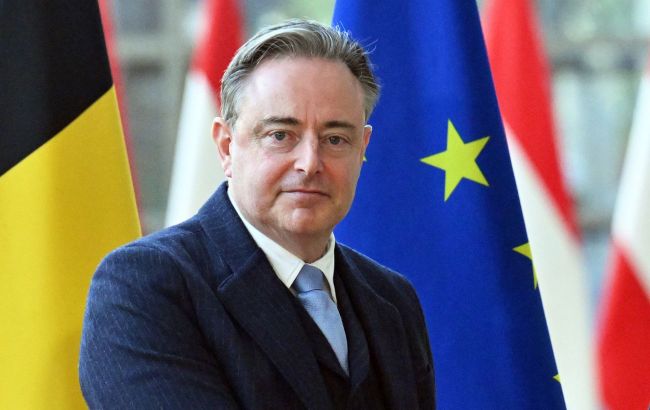Belgium sets condition for use of Russian assets to support Ukraine
 Prime Minister of Belgium Bart De Wever (photo: Getty Images)
Prime Minister of Belgium Bart De Wever (photo: Getty Images)
Belgian Prime Minister Bart De Wever has once again expressed doubts about using frozen Russian assets to finance loans for Ukraine, reports The Guardian.
Belgian Prime Minister Bart De Wever raised legal issues again yesterday regarding the use of frozen Russian assets to finance Ukraine.
De Wever leads a group of countries that remain skeptical about this step due to concerns over legal consequences.
It is noted that Belgium is particularly vulnerable in this matter, as more than half of the funds are held in the Brussels-based clearing company Euroclear.
In his comments this morning, De Wever stated that he had asked other leaders to provide firm guarantees on risk-sharing in the event of using frozen Russian assets to finance loans for Ukraine.
He emphasized that Belgium will be ready to implement this plan only after receiving satisfactory answers to its questions, which have not yet been provided.
Frozen Russian assets
After Russia's full-scale invasion of Ukraine in February 2022, Western countries imposed a series of tough sanctions against Russia. One of the key measures was the freezing of Russian assets abroad.
According to estimates by the International Monetary Fund and independent experts, the volume of such assets in 2024–2025 is expected to exceed $300–$350 billion. Exact figures are difficult to determine due to the distribution of funds across various jurisdictions.
The European Union is considering the possibility of using frozen Russian assets to provide Ukraine with so-called reparations loans. The loan would be repaid only after Ukraine receives compensation from Russia.
In addition, according to Reuters, Ukraine may receive financing of approximately $ 300 billion without the direct confiscation of Russian funds. These funds are planned to be directed toward defense needs and to cover the budget deficit.

